Written by Marijn Overvest | Reviewed by Sjoerd Goedhart | Fact Checked by Ruud Emonds | Our editorial policy
Negotiation Terminology — 50 Definitions You Should Know

As taught in the Negotiation Course for Procurement Professionals / ★★★★★ 4.9 rating
What is negotiation terminology?
- Negotiation terminology is a specific word and concept used in the context of negotiations.
- Familiarity with negotiation terms used in negotiations is essential for effective planning before entering any negotiations.
- Successfully navigating discussions can be achieved by developing your communication skills.
If you’re preparing for negotiation it’s important to be prepared. This list contains negotiation terminology and definitions you should know. Actually, you could even use this list as a mental checklist to make sure you’re fully prepared.
Do you want to learn how to prepare the ultimate negotiation strategy for business? Enroll in our Negotiation Course For Procurement Professionals today!
I have created a free-to-download negotiation preparation toolkit template. It’s a PowerPoint file that can help you prepare for your next negotiation. I even created a video where I’ll explain how you can use this template.
Negotiation Terminology
To do well in a negotiation career, it’s important to understand negotiation terms. Not knowing them can put you at a disadvantage. Here are some common terms used in negotiation:
1. Acting as a Principle
Negotiators who act as principles represent their interests. If they are negotiating as part of a team, they may include agenda items that represent their interests alone.
If you want to learn more about principles in negotiation, you can read our articles about negotiation principles and principled negotiation.
2. Anchoring and Adjustment
An opening position, from which a negotiator incrementally moves away (gains or losses) during a negotiation. The choice of an anchor may be based on faulty or incomplete information, and can potentially be misleading.
3. Agenda
This is your list of topics you want to address or discuss during the negotiation process. It should be structured to ensure that your key issues are resolved.
4. Aspiration Point
This refers to the optimal point that a negotiator hopes to achieve. It is often the most favorable result and more than the minimum acceptable outcome.
5. Avoidance negotiation
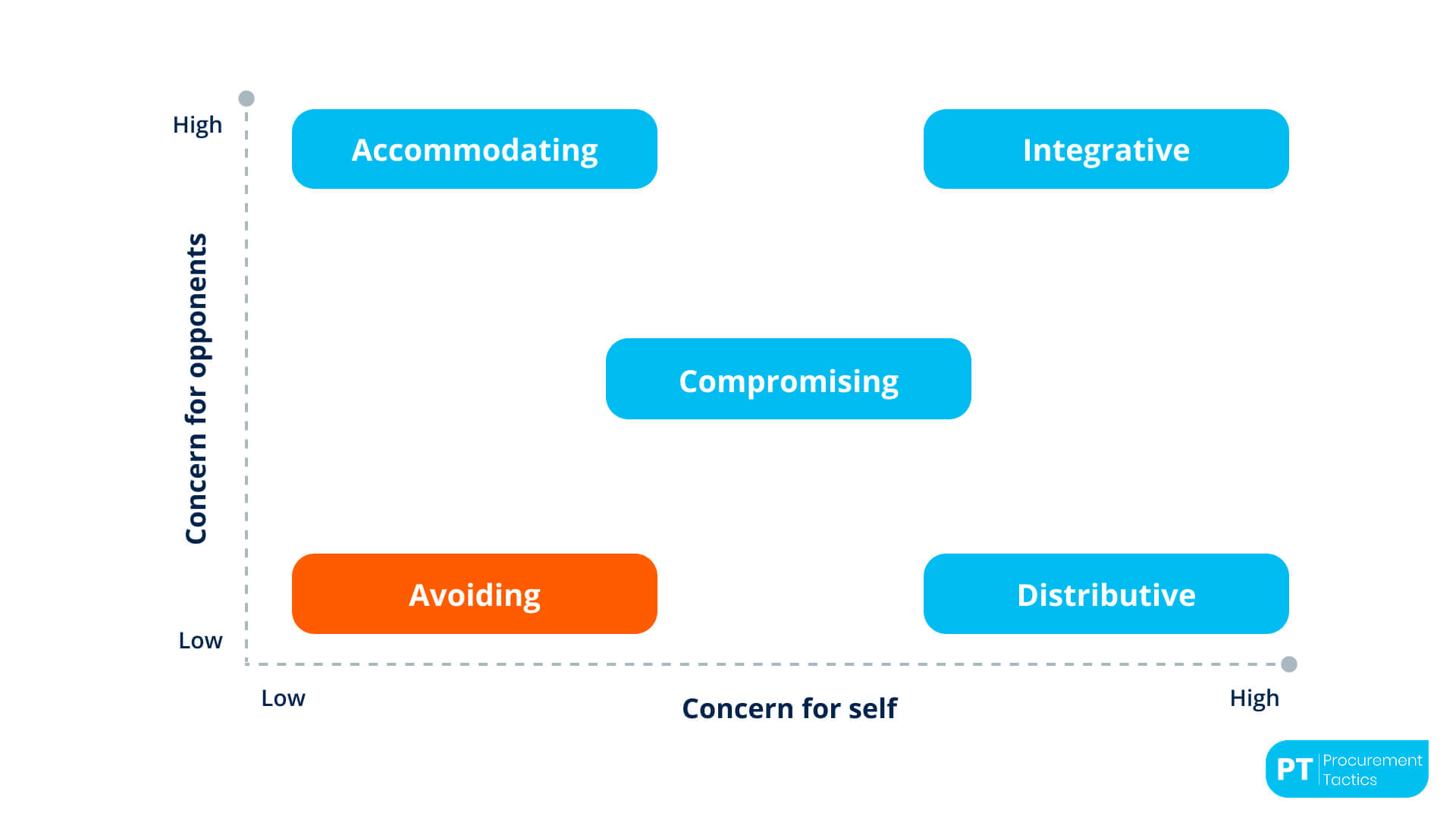
Avoidance negotiation is in the bottom left of the negotiation strategy chart, meaning it has low concern for both the opponent and yourself.
This is a strategy or a negotiation style wherein the negotiator avoids discussions to delay conflict, and is typically used when the risk outweighs the benefits.
6. Bargain
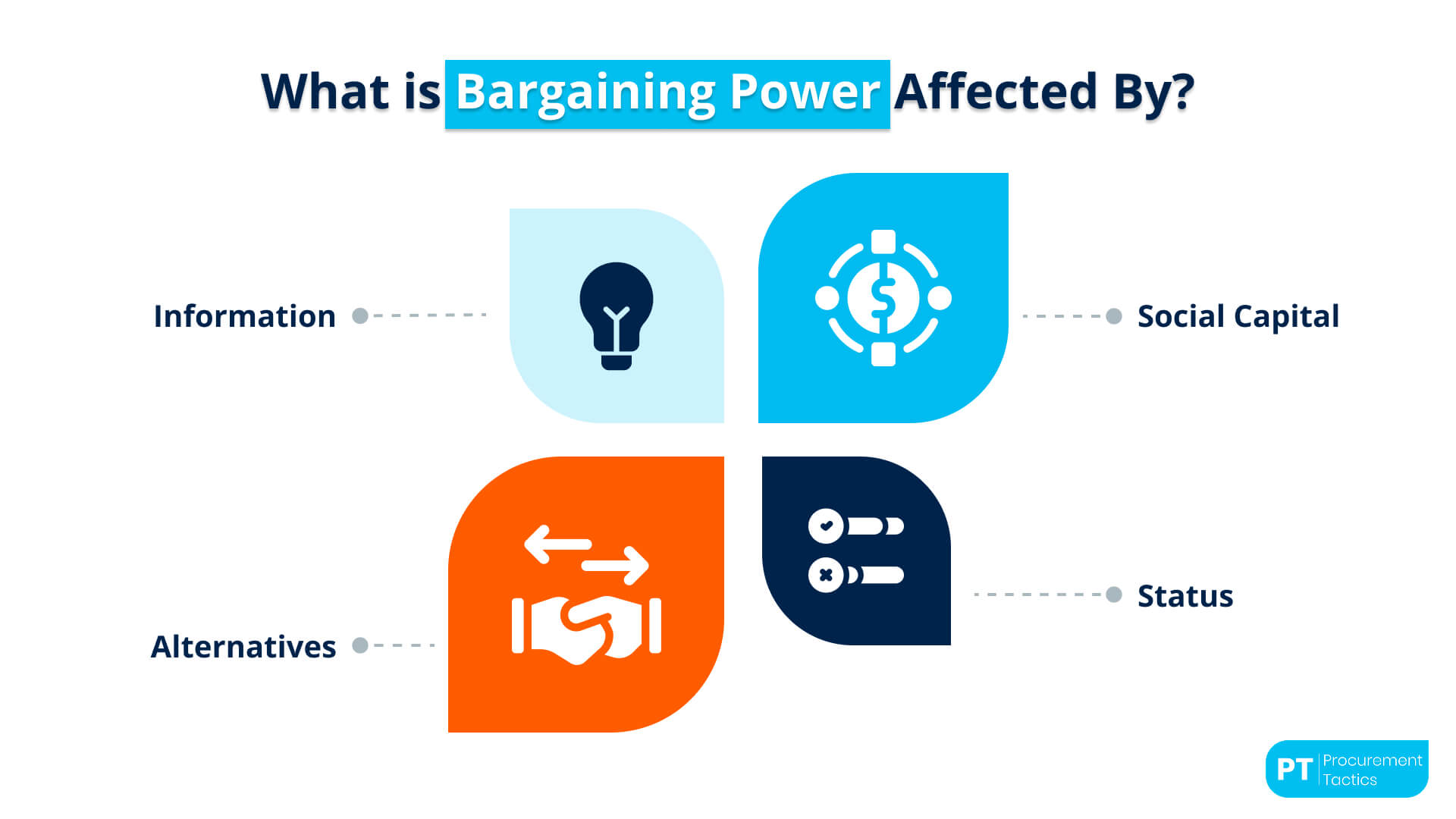
This refers to when the negotiators discuss the conditions of the agreement or settle differences and achieve a deal. This involves both parties adjusting to find a middle ground and get the best possible results.
Bargaining can be quite powerful when done right. Want to know more? Check our article about bargaining power.
7. Bargaining Zone
This refers to the gap between the points of each party that they are willing to accept in a negotiation so that a mutually beneficial agreement can be made.
8. BATNA (Best Alternative To a No Agreement)

BATNA is your backup plan and the most ideal course of action when all else fails in the negotiation.
9. Bottom Line
This refers to the minimum or maximum point each party is willing to accept before they fully walk away from negotiations.
10. Buy-in
This is used to influence the other party to agree, and in which the negotiator subsequently gains the approval and support of the stakeholders.
11. Calibrated questions
These are questions, usually open-ended, to calibrate the thinking of the other party, gather information, and guide discussions.
12. Compromise

This refers to when parties meet the other party halfway by compromising something on their part to achieve a mutual agreement. This happens more often when compromising negotiation occurs.
13. Concession
This refers to when either of the parties gives in to something to reach an agreement, which usually involves a voluntary sacrifice or adjustment.
If you want to know more about concessions, you can check our article about negotiation concessions.
14. Concluding
This is a recap of the main points you have agreed or disagreed upon, and to formalize the agreement or negotiation. It also involves writing the deal and ensuring each party are satisfied with the deal agreed upon.
15. Consistency Principle
The need to appear consistent in beliefs, feelings, and behaviors, not only to others but to ourselves, too.
16. Counter Proposal
This refers to an alternative solution when there is an agreement on the one that is already presented. This helps negotiators encourage each party to agree by highlighting the most important terms before making decisions.
17. Distributive Negotiation
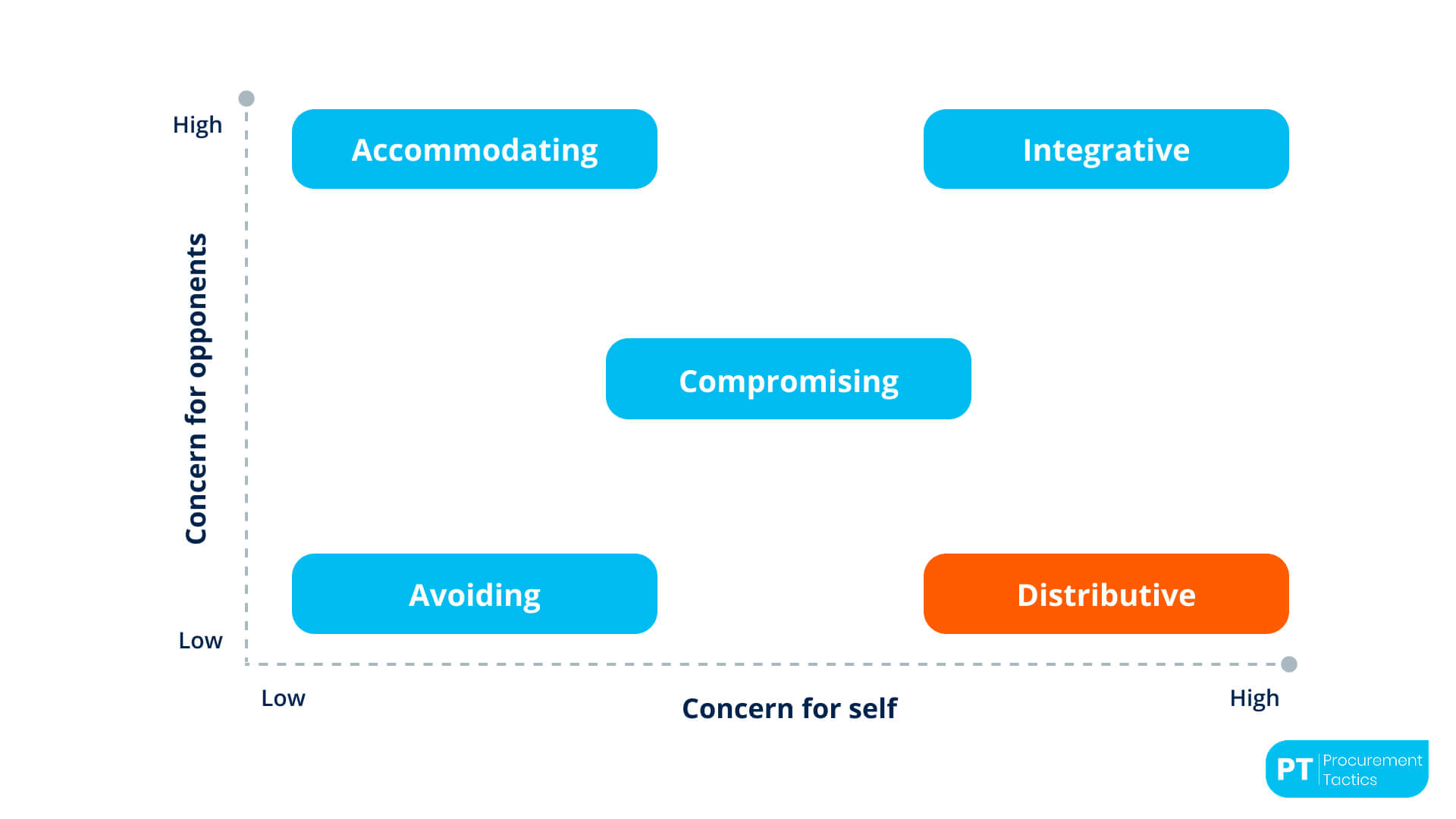
A negotiation technique and/or type that seeks to gain at the opponent’s loss. Any situation in which one person’s gain is exactly equal to the opponent’s loss is considered distributive. Haggling over $100 is an example of distributive negotiation.
18. Deadlock
This refers to the point of no agreement. Simply put, the point of the discussion is a dead end. It requires new strategies or compromise to make the negotiation work again.
19. Dyadic Negotiation
A negotiation between two persons, as opposed to negotiations in which more parties are involved.
20. Dynamic Silence
To use silence as a tool to let each skill sink in and give the other party the opportunity to respond.
21. Haggling Strategy
Haggling is an approach to bargaining relentlessly for the purpose of getting more or giving less without concern for the relationship.
22. Highball
This refers to a tactic in negotiation that involves asking for a lot more than you think the other party will agree to offer you. This allows space for concessions while achieving a much better outcome than originally planned.
23. Integrative negotiation
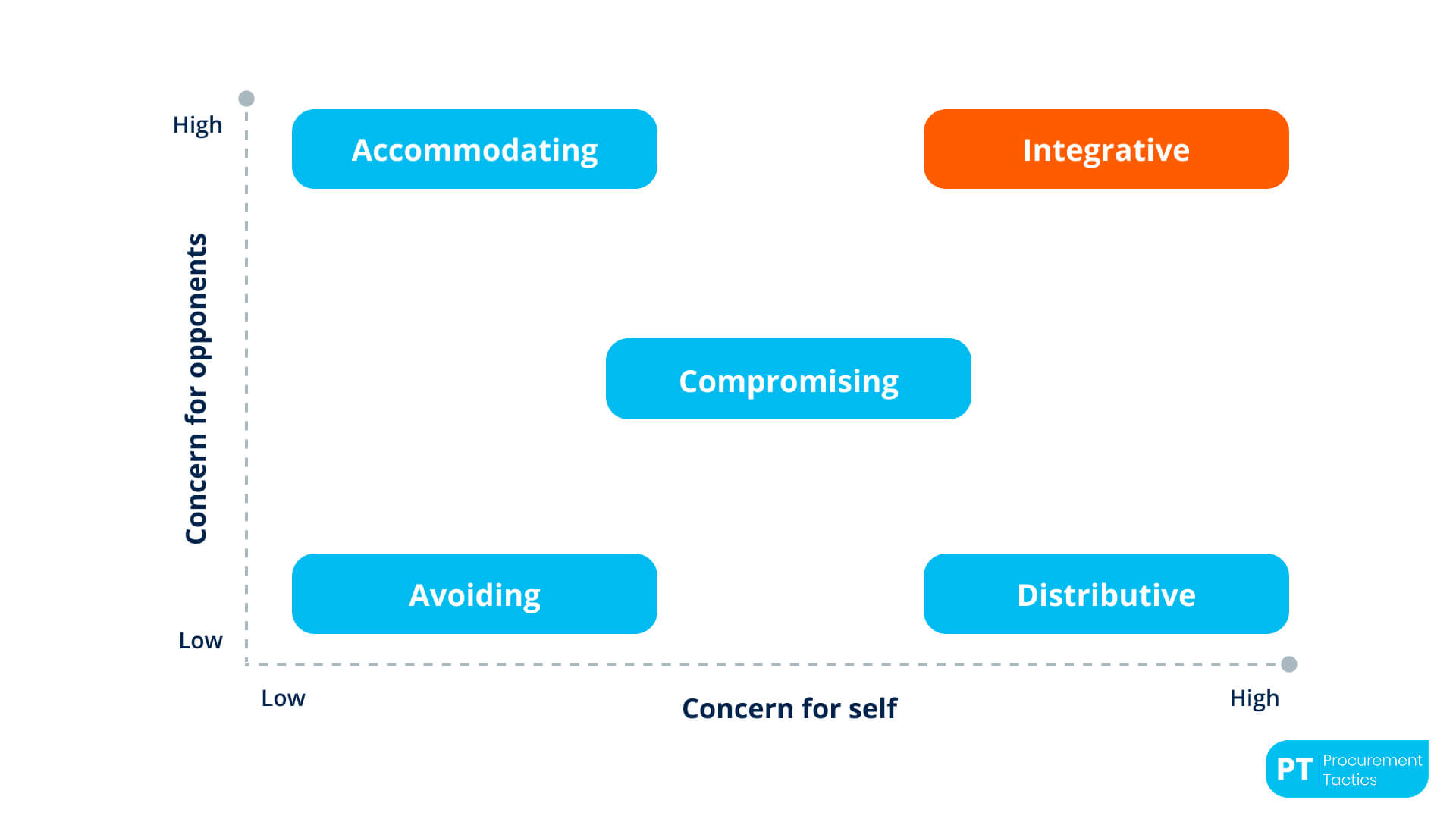
The integrative negotiation is a type of negotiation style characterized by the intention of a win-win for both parties. More so, it is a collaborative approach wherein both parties seek alternatives that could benefit both parties well.
24. Label
It is the verbal observation of the emotion displayed in the negotiation. It involves naming or summarizing the intentions and concerns of the other party to show understanding and build rapport.
25. Leading Questions
These are questions designed to generate only one possible answer, which are designed to guide the party toward a specific answer or a conclusion that aligns with your goals. It suggests or ‘guides’ the other party towards your desired response.
26. Leverage
This is something that gives you power or advantage in a negotiation. It comes from factors such as having alternative options, or a stronger position concerning the needs of the other party.
27. Limited Authority
A negotiating gambit whereby a negotiator says he cannot make a decision and must resort to a higher authority. This allows either party to delay commitments, gain time to think things through, or push for better terms by deflecting pressure.
28. Linkage Effect
This refers to when one deal point of a negotiation is attached to another and impacts the negotiation or agreement has on the other party to influence outcomes.
29. Lowball
This refers to when you offer less than what you think is acceptable. The main point of lowballing is to pressure the other party into lowering their expectations.
30. MDO
MDO is a short-term for the most desired outcome. It is usually called the ideal situation because it is when either of the party aims to achieve the best possible result in a deal. It also guides strategies and decisions during negotiations.
31. Mirror
A communication technique where you repeat the last three to five words or a portion of what the other party has just said. This may involve mirroring their words, tone, or body language to build a connection.
32. Negotiating Gambit
This refers to a strategy in negotiating that should be avoided because it damages relationships. It is because in this type of strategy, the party offers an initially high demand, which often scares away the other party.
33. Negotiating Roles
This refers to the different people in a negotiating team can have different roles such as primary negotiator, Kinetic and paralanguage expert, etc. Common roles include the leader, analyst, and influencer.
34. No-oriented questions
These are questions that are designed to draw out “no’ as an answer from the other party to make them feel in control. This eases up pressure and makes them feel more comfortable.
35. Non-verbal cues
These are the body language signs give away how a person is feeling and what s/he is thinking. This is closely related to kinesics. Examples include facial expressions, gestures, tone of voice, and eye contact that convey emotions, attitudes, or intentions without words.
36. Offer
This is a proposal to provide a term or condition for an agreement you are willing to be bound to. Often, it is called the starting point toward a potential agreement.
37. Package
This refers to an offer that has many elements as it is a group of proposals presented together to address interests and concerns. It enables the parties to trade off less critical items for more important ones.
38. Paralanguage
This refers to variations in speech such as pitch, loudness, tempo, tone, duration, laughing, and crying. This is basically how things are said. These cues can help influence the negotiation’s outcome when done right.
39. Position
This refers to a statement of what a person or party wants in a negotiation. Simply put, it tells you their stance or ‘position’ in the agreement and what their initial demands are.
40. Reach a Consensus
This refers to when both parties agree on a matter that they first disagreed upon. At this stage, all parties have already aligned their key terms and decisions to ensure that the core interests of all parties are properly addressed.
41. Reciprocity Principle
Occurs when a negotiating party feels obligated to return in kind what the other side has offered or given them. This principle might result in one side making a concession because the other side has done the same.
42. Reservation Value
For sellers, the reservation price or value is the minimum amount they are prepared to accept. On the other hand, it is the maximum amount that a buyer is prepared or able to pay.
43. Resistance Point (RP)
The point beyond which a person/party will not go. The lower limit of the range of acceptable negotiation outcomes.
44. RFX
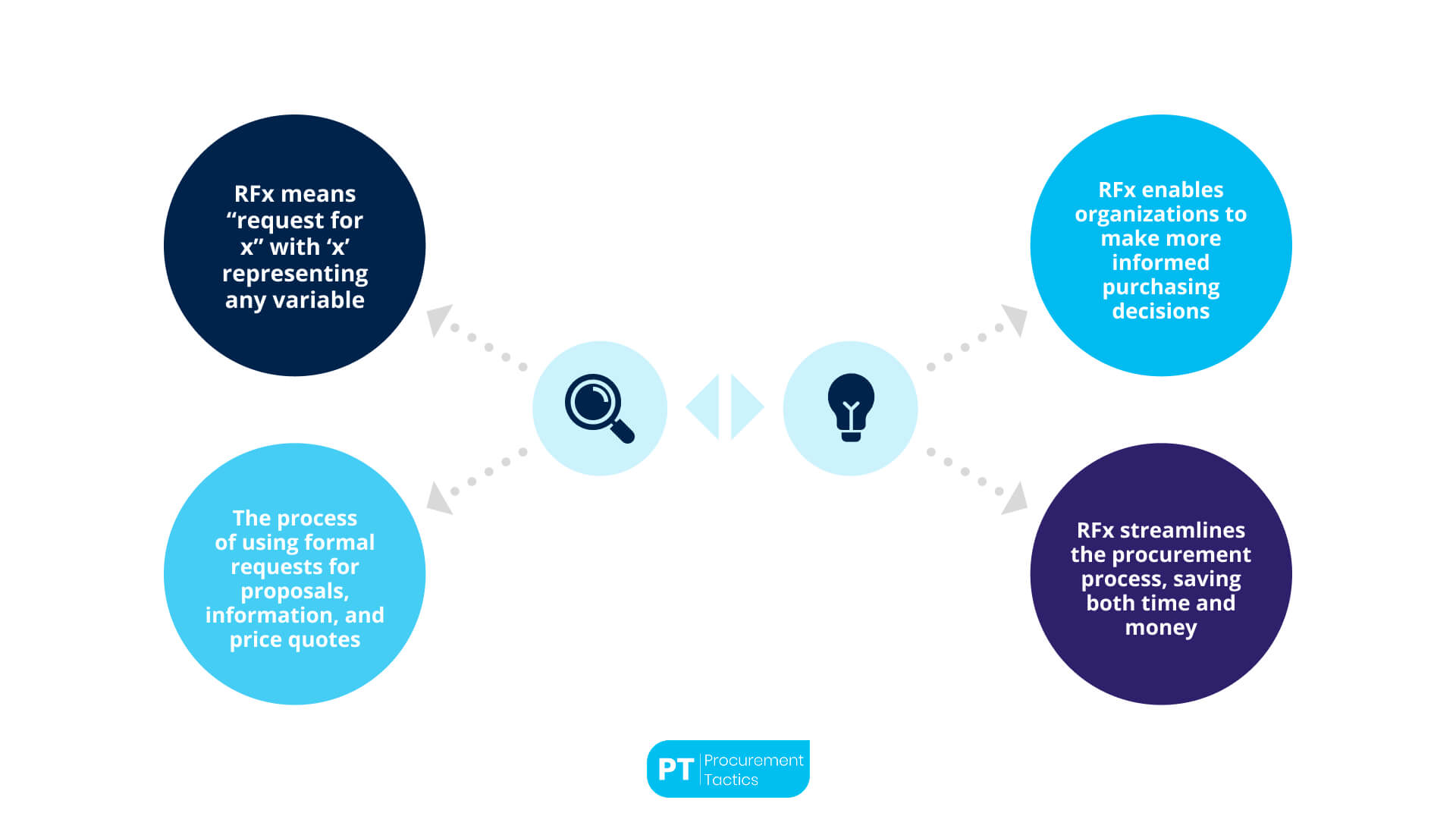
What is Rfx? How is it different to RFQ or RFP?
RFx, also known as “Request for X”, it is the process of using formal requests for proposals, information, and price quotes. These are also utilized to ensure that parties have a well-informed decision.
45. Summary
This refers to the synopsis of the negotiation, where key points, agreements, or discussions that have occurred during the negotiation process are synthesized to be easily read.
46. Tactics

Negotiation tactics are measures taken to turn a negotiation to your advantage. It can range from persuasive techniques such as mirroring. However, there are tactics that could aggravate the other party, so each tactic should be researched accordingly.
47. Ultimatum
A threat of no agreement. Commonly expressed as “take it or leave it.” It is considered as a final demand or offer presented by one party, and used as a tactic, albeit a risky one, to force the other party into making a decision.
48. Walk-out
This is a situation where a party leaves the negotiating table and refuses to return. It is a deliberate tactic to compel pressure on the other party and shift the power dynamics to the one who walks out.
49. Winner’s Curse
Occurs when your aspiration point is too low. You accept a deal and wonder whether your opponent would have given you a better deal had you been more persistent.
50. Zone of Possible Agreement (ZOPA)

The Zone of Possible Agreement of ZOPA in Negotiation is the range of reservation values between each party in the negotiation. Also, It is the overlap area in which a party is willing to pay.
Pro Tip: Before entering a negotiation, define your ZOPA boundaries and rehearse walking away if offers fall outside them.
⭢ Learn how to build your own ZOPA and BATNA toolkit in our Negotiation Course for Procurement Professionals—it’s where preparation meets persuasion.
Conclusion
In summary, knowing negotiation terms is crucial for successful deal-making. These terms help you plan strategies, communicate effectively, and handle team dynamics.
Understanding styles, power dynamics, and resolution techniques gives you an edge in negotiations. It’s like having a toolkit for navigating different aspects of the negotiation process.
So, whether it’s recognizing a good deal or managing potential challenges, being familiar with negotiation terminology is key to achieving positive outcomes
Frequentlyasked questions
What are negotiation terminologies?
Negotiation terminologies are specific words and concepts used in the context of negotiations.
Why are negotiation terminologies important to learn negotiation terms?
Learning negotiation terms is crucial for anyone involved in negotiations as it provides a common language and framework. Without this knowledge, individuals may face challenges in understanding and navigating the negotiation process.
How does knowledge of negotiation terms contribute to success in negotiations?
Knowing negotiation terms allows individuals to strategize effectively, communicate clearly, and understand the dynamics of the negotiation process. It empowers negotiators to make informed decisions and reach favorable outcomes.
About the author
My name is Marijn Overvest, I’m the founder of Procurement Tactics. I have a deep passion for procurement, and I’ve upskilled over 200 procurement teams from all over the world. When I’m not working, I love running and cycling.






